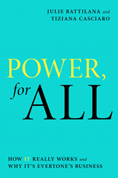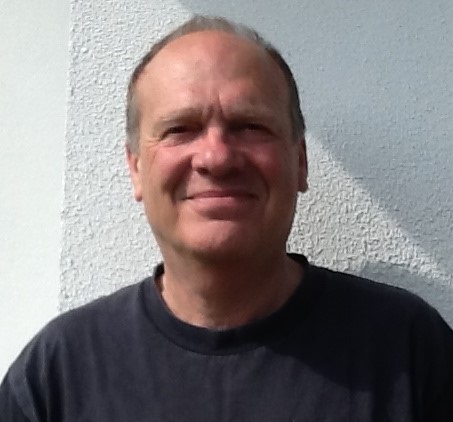- Behaviour
Understanding the Dynamics of Power
An essential guide to how power works and how everyone can harness it to make change happen
In their new book, Power for All, Professor Tiziana Casciaro, of the University of Toronto’s Rotman School of Management, and Harvard Business School’s Professor Julie Battilana delve into the fundamental meaning of power, focusing on its positive side as a means to take control of our lives and drive change for good.  They explain how power is essentially about influencing other people’s behaviour by exercising control over the access to resources that other people 'value'—be they material or psychological.
They explain how power is essentially about influencing other people’s behaviour by exercising control over the access to resources that other people 'value'—be they material or psychological.
In a free society power is not just for the elite. It is theoretically available to everyone and, can be the key to realizing our personal, professional or political goals. However, a deep misunderstanding can stop us taking up the power potentially available to us. This, say the authors, is due to three ‘pernicious fallacies’. First that power is a god given trait which some have but most don’t; secondly that power equates to position—figures of authority are its sole possessors; and finally, that power is ‘dirty’ and powerful people corrupt—exemplified by the grim Harvey Weinstein.
Not only does this ‘catastrophic’ misunderstanding put us off seeking power for ourselves but crucially it makes us less likely to identify, prevent, or stop abuses of power.
The central premise of the book is that the dynamics of power—what it is, how it works, and how it can be harnessed—can be learnt by anyone, whatever their status, to improve their lives and the society they belong to. Society being an important aspect, as nobody exercises power in isolation. Being power-savvy enables us to identify the power structures around us and how we are influenced by the power of others. A key message of the book is that joining forces with others can enable those less endowed with power to disrupt or shift ‘sticky’ existing power structures and oppressive hierarchies.
The scene is set, not with the story of some high-flying CEO, but with that of an autistic survivor of a women’s refuge who built an organization that helps homeless women gain control of their lives—based on ‘coaching’. Key to her success has been persuading executive coaches to give their time to the enterprise. Her power to do this was through offering something they value—not money—but a sense of purpose and impact, deep learning, and a community of peers.
At the other end of the scale the authors use Donatella Versace as an example, but the message is the same. To have power over anyone you must first have something they value, and it will be a balance as power is relative—the other person will have things you value—and this balance will shift over time.
More than anything else people value ‘safety’ and ‘self-esteem’ and the resources needed to satisfy these desires are: money, status, affiliation, achievement, autonomy, and morality (as an expression of our higher selves). Based on these insights the authors explain how we can ‘power-map’ our workplaces and the world around us to maximize our power or our collective power with others.
The book also looks at the exercise of power. Although it is neither moral or immoral in itself, power can have a dark side—poisoning through hubris and self-absorption—and a bright side, where through humility, empathy and a focus on a higher purpose it can be a force for good. An important insight is that people at the top should resist the tendency for self-focus and pay attention to people of lower rank, and, on the flip-side, that understanding power can make everyone less prone to obedience to authority when it is going off track.
The distribution of power affects us all. As we all have resources to offer, there are actions we can take to change power structures in our workplaces and our personal networks. However, on the macro scale this can be more difficult—though the insights offered in this important book can be a guide to orchestrating power through collective action to press for wider societal change.
In the free world, democracy is our great hope for achieving an equitable distribution of power—despite recent experience showing it can take some bizarre turns. Echoing the authors’ message, the 'values' participants in the democratic process prioritize are key. If protecting the planet, championing freedom, alleviating poverty, and enhancing global well-being, are the values prioritized, hope may be justified.
Rotman School of Management is Canada’s leading business school and has Canada’s largest group of management faculty. It is home to some of the most innovative research institutes in the world
ARTICLES YOU MIGHT LIKE
RESEARCH
Harvard and BC University study values conversational receptiveness in our polarized times
DEVELOPING LEADERS QUARTERLY MAGAZINE AND WEEKLY BRIEFING EMAILS

































